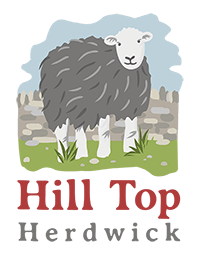Hill Top Farm
Home of the Hill Top Herdwick
descendants of the registered “Claife” flock belonging to Mrs HeelisHill Top Farm, Near Sawrey was bequeathed to the National Trust in 1944. Today, the farm comprises of over two hundred and fifty acres.
On purchase in 1905 by Beatrix Potter the holding briefly amounted to thirty-four acres. The farm was grown strategically by Beatrix with adjacent nearby land in and around the village acquired to aid viability.
Hill Top Farm located within the south of the Lake District is characterised with enclosed pasture fields, hay meadows and intakes. Latterly, Latterbarrow – recognised as one of Wainwrights outlying fells was added to the farm following relet changes at a neighbouring National Trust Farm.
The small nature of the farm and limited layout of traditional Lakeland stone-built byres, hulls, barns and lofts lends itself to a way of farming that focuses upon breeding stock for rearing not fattening.
The farms current environmental scheme embeds our duty as stewards of the land. Intrinsic to ensuring and maintaining a landscape rich in biodiversity and wildlife habitat.
-
Upkeep of drystone walls
-
Hill Top Hay meadows - traditional practice of closing off and taking the crop in later summer months
-
Designation of specific land parcels for minimal use of artificial fertiliser and restricted supplementary feeding
-
Restoration of woodland areas and strategic planting of replacement native trees
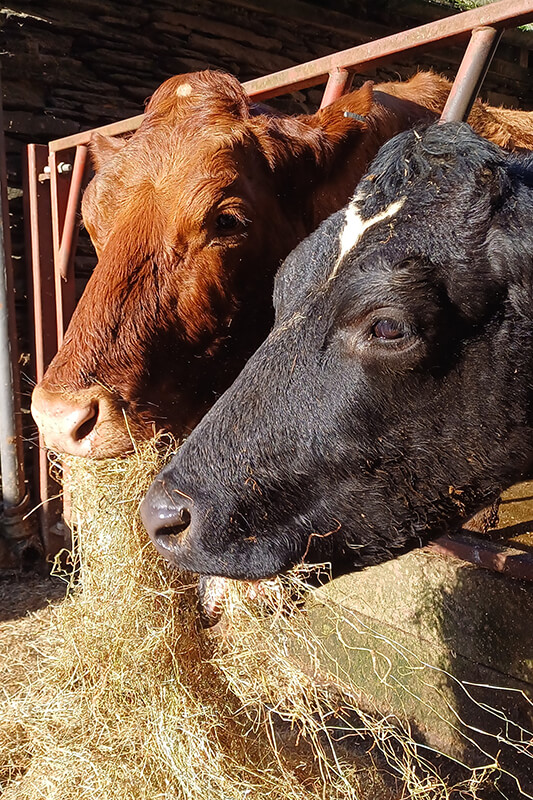
The Beef Suckler Herd
The suckler herd at Hill Top Farm comprises of a variety of cross breed cows. When sired by a suitable bull all have the potential to rear a calf of curvaceous confirmation which continue to satisfy demand from the British cattle market.
The herd grazes the land from late spring to the early autumn months and spend the winter months in the byres of Hill Top Farm. This protects the land from poaching and ensures the cattle are suitably sheltered from the winter elements.
Manure from the cows is used to feed the land helping to sustain the meadows throughout the year. It also ensures we are able to make a crop of hay and silage during the summer months that will feed the cattle and Hill Top Herdwicks during the long winter months.
The cattle are here to produce and raise a calf, typically staying together until spaining at around eight months to ensure the best start in life. The suckled calves are then sold or kept a few months longer before going on to a new home for the next part of their natural growing journey.
The Herd & Flock
Together with the cattle we also require sheep to help graze the land. Typically, the sheep – outside all year-round chew on shorter grass, whilst the cattle prefer to pull on much taller grass. Collectively their grazing habits through a process of selective rotational grazing encourage heathy regrowth and regeneration throughout the year – a bonny landscape scene when caught on camera!
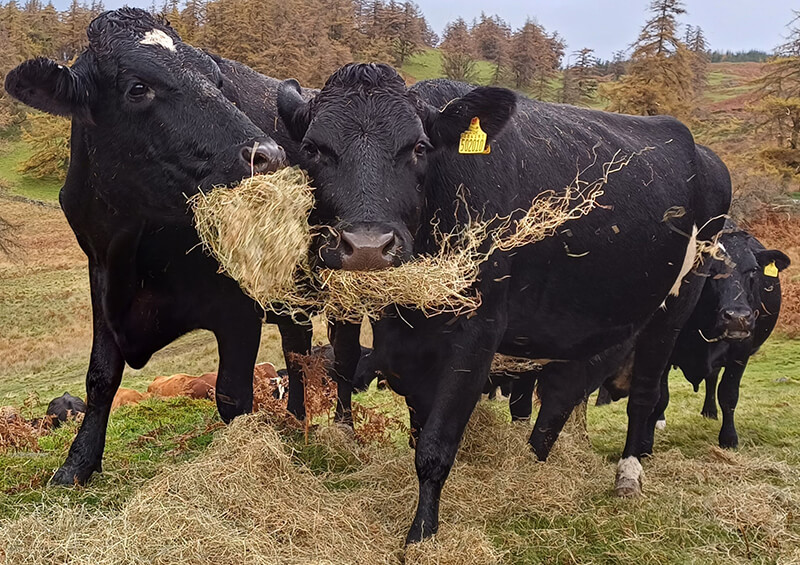
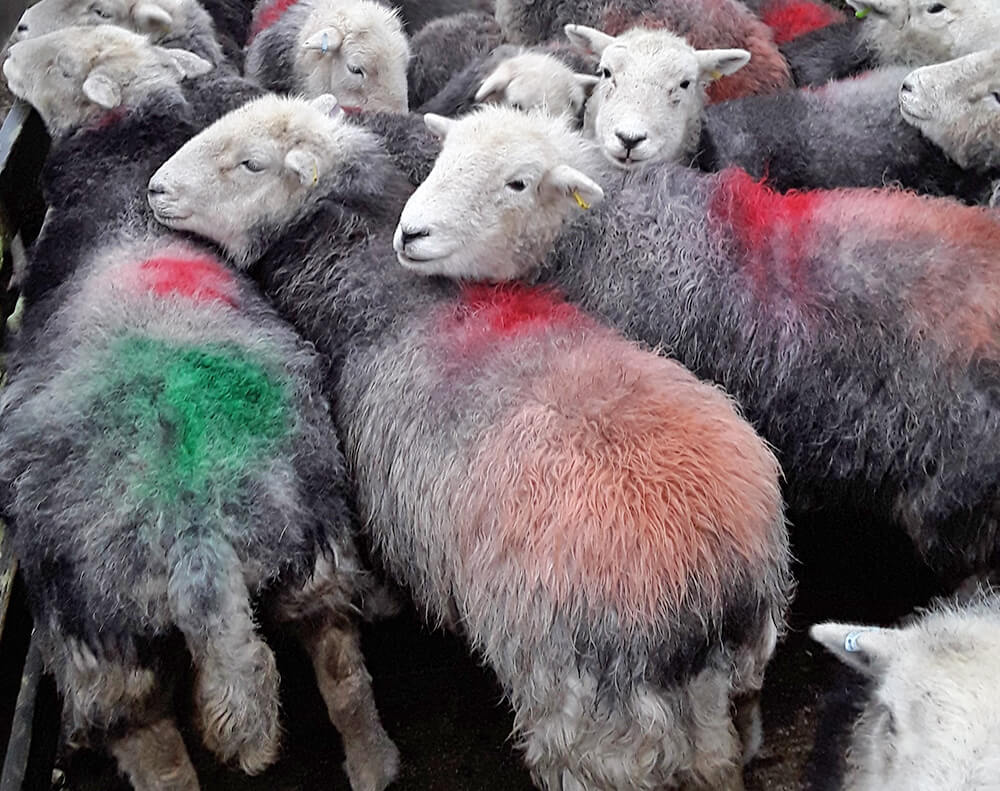
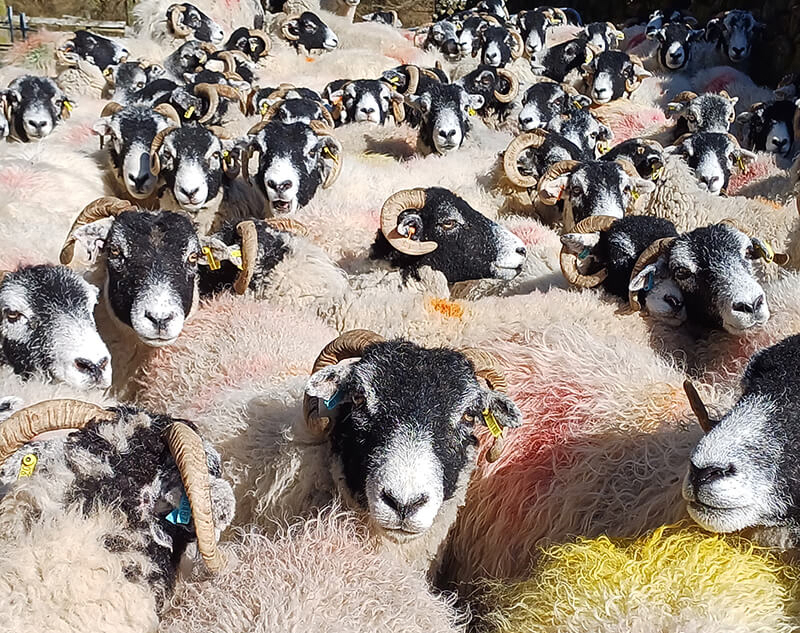
The Flock
The sheep are somewhat more labour intensive with their outdoor management and welfare needs falling typically in sync with the seasons, highlighted by~ tupping time, lambing, shearing, spaining and sales.
Our flock consists of Hill Top Herdwick with other pure and cross breeds ~ a similar approach to that of the shepherd of and following the era of Mrs Heelis.
The sheep graze the fields and intakes of Hill Top throughout the year in specific batches to aid management, rearing lambs from late March onwards until spained.
Our established flock system allows us to designate a proportion of female lambs for future breeding each year kept as either incoming replacements or sold to another farm. The pure female Hill Top Herdwick lambs remaining hefted to Sawrey for the duration of their life
The other lambs, predominantly male are either sold store for further growth and finishing or sold fat. The male Hill Top Herdwicks are typically in Sawrey several months longer than the other breeds ~ honourably & naturally a much more desirable slower maturing tastier meat.
The combination of breeds works well we have a variety of lambs available to sell from the early autumn until late winter.
